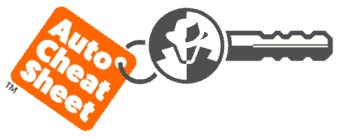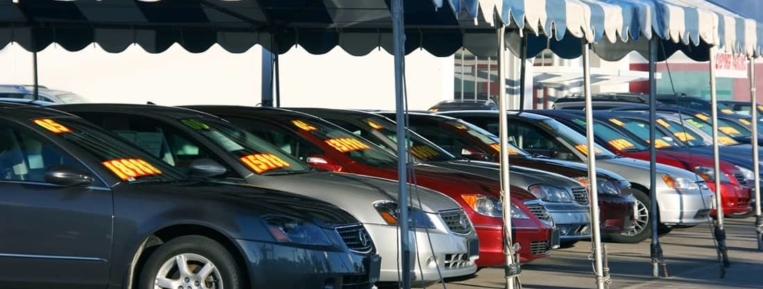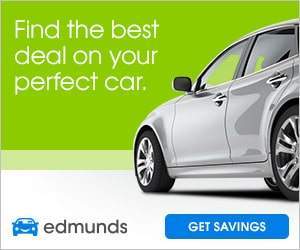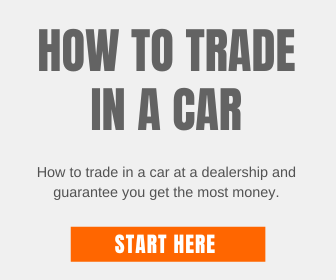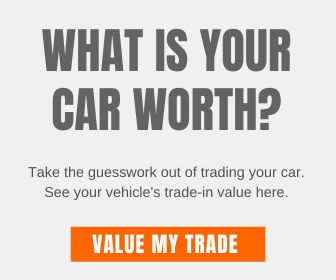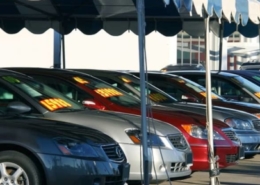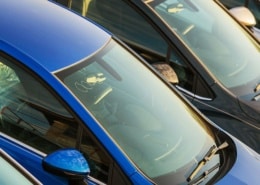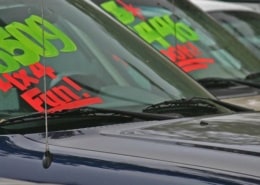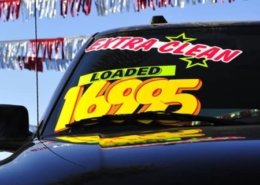How to Estimate Used Car Cost on Any Dealer’s Car
It’s almost impossible to determine the dealer’s used car cost when they acquired the vehicle from an auto auction, wholesaler, or individual.
The best thing you can do is estimate the used car cost of what a dealer should have paid for the vehicle and start your negotiations from there.
Used Cars Do Not Have a Factory Invoice
Unlike new cars, used cars do not have an invoice. Each used car must be looked at on an individual basis. Dealers buy used cars from auctions, wholesalers, and rental companies or acquire them through the dealerships as trade-ins.
Calculating dealer cost on a used car is different than figuring out a dealer’s actual new car cost.
Dealers make an internal cost sheet for each individual used car. The cost sheet acts as an invoice for the used vehicle and allows management to see exactly how much they have invested in a car.
This type of system makes it difficult for you to determine what the actual cost is on a used car. You can never tell if the car dealer bought the car cheap (under wholesale or market value) or overpaid for the vehicle.
More tips about used car dealer costs:
- Dealers keep their used car costs a closely guarded secret. Typically, only a select few within the dealership access this top-secret information.
- No matter what anyone tells you, there’s no way to tell exactly what a dealer paid for a used car. Each used car must be looked at individually. The vehicle’s condition, mileage, factory options, and even consumer popularity are just a few factors that determine the dealer’s overall cost.
- Used car sales are a high-profit area for a dealership; one of the reasons for this is that a dealer does not have to disclose their cost for the world to see. Dealers have a more significant opportunity to make more money selling a used car over the sale of a new one. This is where the old saying, “Buy them cheap and stack them deep,” originated.
Factors That Affect a Dealer’s Used Car Cost
Many factors affect a used car’s cost; these factors will cause the price of a vehicle to fluctuate up or down. Some of these include;
- Condition of the vehicle
- Incurred mileage on the car
- Factory options and trim levels
- Popularity and demand
- The current used car market
- Dealer reconditioning costs
- How the vehicle is acquired
Overall, most car dealerships’ average cost on a used car is just below the listed wholesale price of the vehicle.
Buying a reliable used car below or close to the listed wholesale value is considered an excellent deal when buying a used car.
Recommended Used Car Shopping Sites
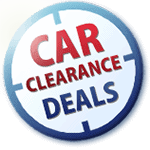 RydeShopper will search for clearance prices in your local area. Their huge dealer network will help you find your next used car quickly. Make sure you select all the dealerships in your area to maximize your discounts and savings.
RydeShopper will search for clearance prices in your local area. Their huge dealer network will help you find your next used car quickly. Make sure you select all the dealerships in your area to maximize your discounts and savings.
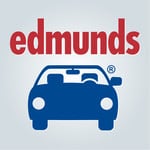 Edmunds is one of the oldest used car research and review sites on the Internet. You're guaranteed to find a great deal on a used car within the hundreds of thousands of vehicles listed online.
Edmunds is one of the oldest used car research and review sites on the Internet. You're guaranteed to find a great deal on a used car within the hundreds of thousands of vehicles listed online.
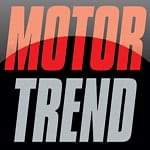 MotorTrend is one of the Internet's best-kept price quote secrets. They are a subsidiary of the well-known MotorTrend Magazine with dealer relationships all over the country. Use their simple car price quote service to find your next vehicle.
MotorTrend is one of the Internet's best-kept price quote secrets. They are a subsidiary of the well-known MotorTrend Magazine with dealer relationships all over the country. Use their simple car price quote service to find your next vehicle.
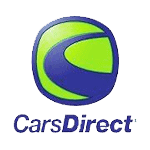 CarsDirect has been in business for well over a decade. Their search tool makes it easy to find the exact car you want to purchase. Simple search and navigation will help you narrow your choices to the perfect vehicle.
CarsDirect has been in business for well over a decade. Their search tool makes it easy to find the exact car you want to purchase. Simple search and navigation will help you narrow your choices to the perfect vehicle.
Used Car Reconditioning Fees
The expense for the dealership to fix or replace items to get the car ready for retail sales is known as reconditioning fees. Reconditioning fees include mechanical repairs, bodywork, touch-up, tires, oil change, detail, etc.
Some vehicles may only require minor reconditioning, and some may have significant reconditioning fees associated with them; it all depends on the car’s condition when acquired by the dealer.
Used Car Pack
On top of reconditioning fees, a dealer may add a “Pack” to the vehicle. A pack can be anywhere from $250-$750 or more. The pack is added to every car to help pay the dealership’s day-t0-day operating costs.
Although it may be hard to negotiate at some dealerships, it is negotiable, and salespeople are generally not paid commission on this amount.
Dealer’s Used Car Cost Sheet Example
A used car does not have a factory invoice. Most dealerships keep a three-ring binder at the manager’s desk (it may be on the computer). This binder holds all the used car inventory on the dealer’s lot.
Each used vehicle has a cost sheet containing every dime spent reconditioning the car to make it ready for sale.
| Dealership used car cost sheet example | ||
|---|---|---|
| $8,300 | = | Price dealer paid for the used car |
| $750 | = | Pack (Additional money salesmen not paid commission on) |
| $250 | = | U.C.I. (Used Car Inspection performed by dealer) |
| $175 | = | Windshield replaced |
| $150 | = | Broken console repaired |
| $75 | = | Front and rear bumper touch up |
| $110 | = | Detail |
| $9,810 | = | Total Dealer Cost |
Steps to Estimating a Dealer’s Used Car Cost
The first thing you want to do is find the car you want. You can do this easily by using the best online car shopping sites. These sites have millions of used and certified pre-owned vehicles to browse through. Their online tools allow you to fine-tune search criteria to find that perfect used car.
Once you’ve picked out the used car you’d like to own, print or write down the vehicle’s specifics, such as the year, make, model, trim, miles, and options. You’ll use this information to help estimate what a dealer should have paid for the vehicle.
You’re now going to appraise the car just as a dealer would if you were trading it in. The appraisal tool I recommend is Edmunds Appraisal Tool. Their tool tends to be closer to your area’s local used car market at any given time.
Enter the information about the car. Ensure you enter the correct year, make, model, trim, exact mileage, engine, transmission, options, etc. You will then choose the vehicle’s overall condition. Your choices will be outstanding, clean, average, and poor.
If you’re looking at a used car from a reputable dealer, you should choose the condition as “excellent” to get the most reliable number.
The last section will provide you with three amounts:
- Trade-in – What you can expect for your trade from a local dealership.
- Private Party Sale – What to expect if you sell or buy a car through a private party.
- Dealer Retail –The price others pay for the exact vehicle in your local area.
The trade-in amount is the one you want to keep in mind. It will give you the closest estimate to the dealer’s original cost and a good starting point for negotiating. Even though a car dealer will add more cost to a car before making it available for sale, they’ll try to keep their reconditioning costs to a minimum.
In reality, anything under “dealer retail” would be a good deal since that’s the “average price” people in your local area are paying for the same type of car. However, your goal is to purchase the car below or as close as possible to the trade-in value.
Write down all three amounts, trade-in, private party, and dealer retail. When you start negotiating a used car’s price, you will want these figures.
Additional Tips About Used Car Cost
Here are some essential tips on getting a feel for the current used car market and additional information on other sources available to check used car values and resources.
The best way to protect yourself from being ripped off by a dealership when buying a used car is to not rush into it. Slow down, take your time, do your research and make good buying decisions. Doing so will ensure you get a great deal by buying a used car.
Kelley Blue Book Used Car Values
Kelley Blue Book is nearly 80 years old and sometimes misspelled as Kelly Blue Book. KBB is the book most people refer to, not realizing there are many other used car value books in the industry.
When a car dealer hears you say, “What’s the Blue Book Value?” He immediately knows you haven’t done your homework and will be easy prey. The Blue Book does provide some beneficial information.
However, in my experience, it does not offer the best figures for estimating a dealer’s used car cost. KBB is commonly used when a dealer provides retail numbers since they are much higher than other publications.
NADA Used Car Guides
The second oldest used car publication, the little yellow/orange book, is the official used car data guide for members of the National Automobile Dealers Association (NADA). Most auto lenders use NADA clean trade value to base how much they’ll lend on a vehicle.
I don’t recommend using this book because most dealers will buy cars well under NADA clean trade.
The Black Book
This is the most commonly used book by dealers to evaluate trade-ins; you must have a dealer’s license or know a dealer to get your hands on one.
When you get your vehicle appraised, you may notice that your value is significantly lower than the trade-in value of other books in the industry. Updated monthly, The Black Book provides dealers with the actual auction or wholesale values.
These numbers are what a dealer may pay for your car at an auction, allowing for any reconditioning fees he may have to incur to prepare the vehicle for sale.
Use eBay Motors Recently Sold Vehicles List
Another great source to check the current market conditions on a specific vehicle is eBay. Put in the car, go to the left column, scroll down to “Show Only,” and check “Sold Listings.” research the past few weeks and see what the car has been selling in or around your area.
I would only add to make sure you’re comparing apples to apples.
Search Free Online Used Car Classifieds
Enter the vehicle you want to buy into Ryde Shopper, Edmunds, MotorTrend, or CarsDirect and request a free dealer quote. Once you’ve received the quotes, compare the prices with what you’ve estimated above to be the dealer’s actual cost.
This will give you an idea of how much mark-up is in the vehicle. Keep in mind that it’s only a guesstimate. It would be best if you always took the time to price the car you want to buy through the Edmund Trade-In Value Tool to get the most accurate pricing amounts.
Carefully read misleading classified advertisements.
Skimming through tricky dealers’ classified ads makes it easy to miss something and focus on the price. Car dealers are very good at writing classified advertisements, leaving the negative aspects out of an ad, and concentrating on the car’s positives.
Let’s say you’re searching for a specific car, and there are 5 of them listed on Edmunds. They’re all identical vehicles and have about the same mileage. Four are priced in the neighborhood at $15,000, and one is priced at only $13,000.
Why is this one vehicle $2,000 cheaper? Look closer at the ad, are the miles conveniently left out? Is there a specific option it’s missing? Is it a different trim line? Maybe it’s just an excellent deal.
I point out that dealers can be very tricky with how they advertise their vehicles. Slow down, be cautious and remember, “if it sounds too good to be true, it probably is.”
